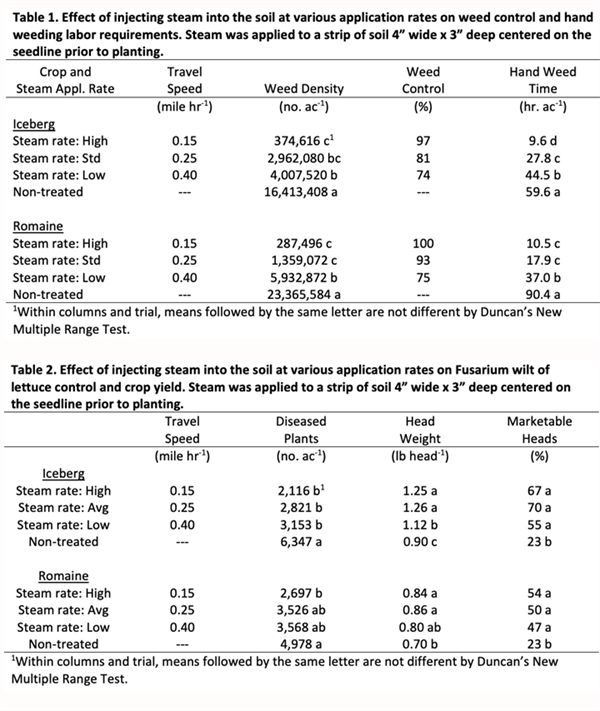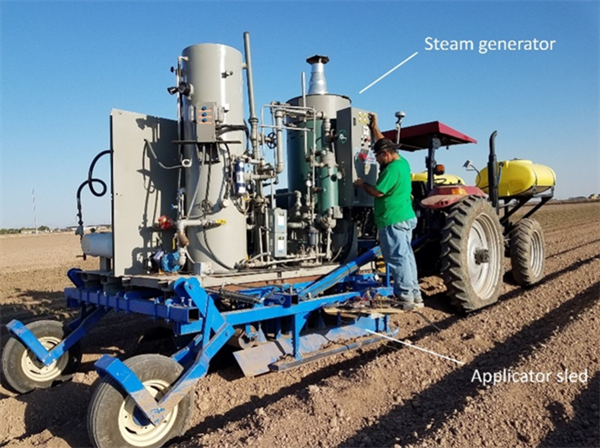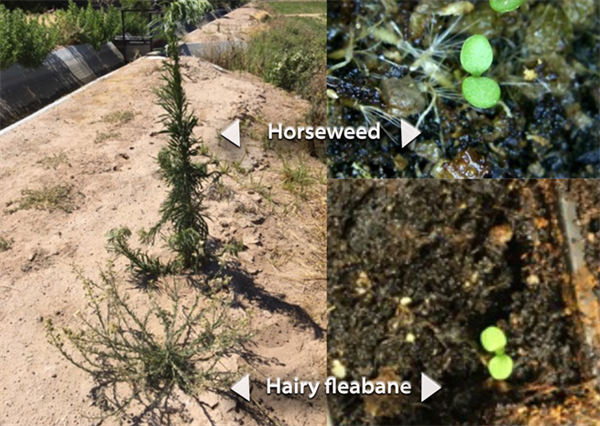



I am seeking samples of downy mildew on lettuce from around Yuma County to support the Michelmore Lab and their ongoing efforts to help characterize the downy mildew populations of the United States. The Michelmore Lab has led the charge on a survey of Bremia variants since 1980 and has been instrumental in demystifying the gene-for-gene nature of lettuce resistance to downy mildew.
Their group invites growers across the United States to submit downy mildew infected plant samples, which are then used to culture the Bremia on live host plants. The team then inoculates a panel of lettuce varieties carrying known resistance genes to determine the race of each isolate they receive. Identifying which races occur in which specific fields is essential to guiding the breeding of new resistant cultivars and maximizing the effectiveness of host-based genetic disease management. The data obtained from these tests are also used to designate new Bremia races through the International Bremia Evaluation Board.
Your contribution will help breed better lettuce for Yuma. This means less breakdown of resistance in the field, and better yields for Yuma growers. To facilitate these submissions the Yuma Plant Health Clinic will be setting up a separate drop-off point and submission sheet for downy mildew sample submissions in the same hallway we use for standard plant diagnostic submissions. The drop-off point will be clearly labelled and consist of a chest-style refrigerator and printed copies of the submission form. It is vital to keep these samples cool so they remain viable for future inoculations, so please place your samples inside of the refrigerator before you leave.
Shipping will be handled by the clinic. All we ask is that you fill out the submission form as completely as you can. An example of the questions that are asked in that form so you can prepare ahead of time can be found HERE .Last fall, we established trials investigating the use of band-steam to control weeds and Fusarium wilt of lettuce in iceberg and romaine lettuce. Band-steam is where, prior to planting, steam is injected in narrow bands, centered on the seedline to raise soil temperatures to levels sufficient to kill weed seed and soilborne pathogens (>140 °F for > 20 minutes). After the soil cools (<1 day), the crop is planted into the strips of disinfested soil.
In the study, we utilized the prototype band-steam applicator (Fig. 1) described in a previous UA Veg IPM articles (Vol. 11 (13) to inject steam into the soil as beds are shaped. The steam applicator was configured to treat a 4” wide by 3” deep band of soil. Three rates of steam (Low, Standard, High) were applied by varying travel speed. The “Standard” rate was where steam was applied at rates needed to reach the target soil temperatures (>140 °F for > 20 minutes). Higher and lower applications rate were examined to ensure target temperatures were met/exceeded to get a better understanding of the efficacy of steam treatment, and to determine if higher travel speeds (less fuel consumption) could be used and still provide effective pest control.
Results showed that application of steam was highly effective at controlling weeds (nettleleaf goosefoot predominant species). At the Standard application rate, over 80% of the weeds were controlled. At High application rates, weed control approached 100%. What was particularly encouraging was that at the Low steam application rate where travel speeds were 60% faster than Standard, and target temperatures were not met, weed control was still very good – about 75%.
Steam treatment was also effective at controlling Fusarium wilt of lettuce. Disease incidence in iceberg and romaine lettuce were reduced by more than 50% as compared to the untreated control (Table 2). Crop plants were noticeably larger and more vigorous throughout the growing season in all steam treated plots (Fig. 2). At the Standard and High application rates of steam, this translated into significant yield increases in iceberg (>300%) and romaine (>90%) lettuce. Significant yield increases were also found at the Low application rate of steam – iceberg (>200%) and romaine (>60%).
The results are very promising, but it is important to note that steam treatment is not an end-all cure for Fusarium wilt disease. At the trial site, disease inoculum levels were considered moderate. However, when inoculum levels are very high, our trials have shown that a 4” wide by 3” band of soil is not effective at controlling the disease. We hypothesize that a wider and/or deeper band of treated soil is needed for effective control. This fall, we will be initiating trials to examine this. We will also be investigating the use of band steam to control pythium and nematodes in carrot. Trial results will be presented in future articles - so Stay Tuned.
As always, if you are interested in seeing the machine operate or would like to test the machine on your farm, please feel free to contact me.
Acknowledgements
This work is supported by the Arizona Specialty Crop Block Grant Program and the Arizona Iceberg Lettuce Research Council. We greatly appreciate their support. Any opinions, findings, conclusions, or recommendations expressed in this publication are those of the author(s) and do not necessarily reflect the view of the U.S. Department of Agriculture.


Fig. 1. Band-steam applicator principally comprising a 35 BHP steam generator mounted on a bed-shaper applicator sled.

Fig. 2. Iceberg lettuce planted in beds treated with steam (left) prior to planting and untreated (right).
Hairy fleabane is a summer annual weed from the Asteraceae family and occasional biennial in our area found in cultivated areas and citrus orchards, alfalfa fields, roadsides and ditch banks, landscapes and around buildings. The seedlings are oval to egg shaped and very similar in size (~0.4-0.8mm) to horseweed (Conyza canadiensis), which makes it very hard to distinguish one from the other in the field.
Hairy fleabane grows about 4 feet, branches from the bottom and leaves are pubescent also stems are covered with stiff hairs. The growth habits of horseweed (marestail) are different in that they grow up to 10 feet tall and branches from the upper half of the plant.
You can find Fleabane flowering right now in the Yuma area especially the Yuma Mesa. The IPM Team has received calls from our friends PCAs and growers stating that the Fleabane survives the application of Glyphosate, which has been reported for both conyzas. So, we got some trials in progress looking for options to control Fleabane as well as other weeds that have shown tolerance to Roundup such as White sweet clover or malva in different crops.
The results from the evaluations will be shared in this newsletter.

Reference:
1. UC/IPM Retrieved from http://ipm.ucanr.edu/PMG/WEEDS/hairy_fleabane.html